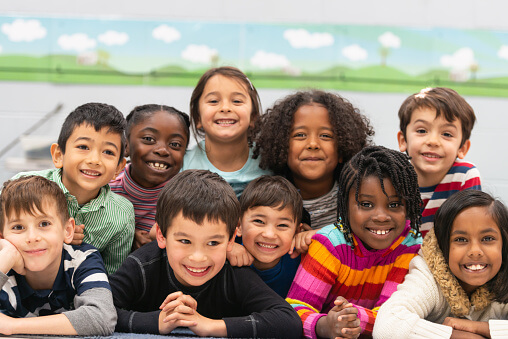
Educator resources supporting equity in G/T services
Resources and tools to assist you in increasing and serving Gifted/Talented students from underrepresented populations.

Statistics and Demographics
Data for state, district, and campus populations including G/T demographic data.
Identification
Identifying CLED gifted learners, including barriers, characteristics, assessments, and more.
Program Services
Service for CLED gifted learners including social/emotional needs, service models, furloughs, exits, and evaluation.
Curriculum and Instruction
Considerations for meeting the educational needs of CLED gifted learners.
Professional Learning
Considerations for meeting the state requirements for teachers working with G/T students.

Equity in serving Gifted/Talented students
Culturally, linguistically, and economically diverse (CLED) gifted learners are often overlooked and underserved. It is important when identifying and serving G/T CLED students we do not view students through a deficit lens, focusing on what they cannot do; we should instead find relevance in the assets or strengths they bring to the classroom. Educators may unconsciously have implicit biases, attitudes or stereotypes, regarding race, culture, or language that can impact their ability to see gifted potential in some children. In her book Achieving Equity, Dr. April Wells describes The ABC’s of Achieving Equity.
Texas State Plan for the Education of Gifted/Talented Students
The G/T State Plan holds districts accountable to ensure that the population of gifted/talented students is closely reflective of the district or campus population. Gifted/Talented students are, as defined by The Texas State Plan for the Education of Gifted/Talented Students (G/T State Plan), children or youth who perform at or shows the potential for performing at a remarkably high level of accomplishment when compared to others of the same age, experience, or environment.
State Plan Guidance
(§29.121) “a child or youth who performs at or shows the potential for performing at a remarkably high level of accomplishment when compared to others of the same age, experience, or environment and who:
(1) Exhibits high performance capability in an intellectual, creative, or artistic area;
(2) Possesses an unusual capacity for leadership; or
(3) Excels in a specific academic field.”*
(2.25) The population of the gifted/talented services program is closely reflective of the population of the total district and/or campus.
Understanding the State Plan
The following are phrases included in the Texas State Plan for the Education of Gifted/Talented Students along with what the statement means for educators. Click on the phrase to see the definition.
One of the goals of G/T services is to provide contextually and culturally relevant experiences for students who exhibit a need, or show potential, for something other than what the regular curriculum provides. These students require a different educational experience to learn and realize that potential. Additionally, it is important to identify and serve students who show a potential for performing at this level early, in order to develop this potential into a talent.
It is important to note that not all gifted students exhibit the same characteristics. Look for students who perform at a higher level (such as learn more quickly, ask more questions, and require less direction) when you compare them to others in your classroom or at the same grade level from the same culturally, linguistically, and economically diverse (CLED) background. Students from CLED backgrounds often demonstrate their need for services in ways that are unique to their life experiences. Many of these students have innate needs, both affective and/or academic, that must be considered when looking at the appropriateness of services.
One of the five domains of giftedness, a student gifted in the intellectual domain of giftedness shows exceptional potential for memory, reasoning, learning rate, spatial reasoning, problem solving, abstractness, and/or making connections.
One of the five domains of giftedness, a student gifted in the creative domain of giftedness shows exceptional potential through critical thinking, creative problem solving, humor, and independent or original thought.
One of the five domains of giftedness, a student gifted in the artistic domain of giftedness shows exceptional potential in the visual or performing arts through creative expression, motor coordination, expressing feelings through an artistic medium, and spatial relationship.
One of the five domains of giftedness, a student gifted in the leadership domain of giftedness shows exceptional potential in influencing others, social communication skills, problem solving, interpersonal and intrapersonal skills, and a sense of responsibility.
One of the five domains of giftedness, a student gifted in the specific academic domain of giftedness shows exceptional potential by acquiring knowledge quickly, conceptualizing and memorizing, pursuing interests, and being widely read in one or more specific academic areas.
One of the goals of G/T services is to provide contextually and culturally relevant experiences for students who exhibit a need, or show potential, for something other than what the regular curriculum provides. These students require a different educational experience to learn and realize that potential. Additionally, it is important to identify and serve students who show a potential for performing at this level early, in order to develop this potential into a talent.
It is important to note that not all gifted students exhibit the same characteristics. Look for students who perform at a higher level (such as learn more quickly, ask more questions, and require less direction) when you compare them to others in your classroom or at the same grade level from the same culturally, linguistically, and economically diverse (CLED) background. Students from CLED backgrounds often demonstrate their need for services in ways that are unique to their life experiences. Many of these students have innate needs, both affective and/or academic, that must be considered when looking at the appropriateness of services.
One of the five domains of giftedness, a student gifted in the intellectual domain of giftedness shows exceptional potential for memory, reasoning, learning rate, spatial reasoning, problem solving, abstractness, and/or making connections.
One of the five domains of giftedness, a student gifted in the creative domain of giftedness shows exceptional potential through critical thinking, creative problem solving, humor, and independent or original thought.
One of the five domains of giftedness, a student gifted in the artistic domain of giftedness shows exceptional potential in the visual or performing arts through creative expression, motor coordination, expressing feelings through an artistic medium, and spatial relationship.
One of the five domains of giftedness, a student gifted in the leadership domain of giftedness shows exceptional potential in influencing others, social communication skills, problem solving, interpersonal and intrapersonal skills, and a sense of responsibility.
One of the five domains of giftedness, a student gifted in the specific academic domain of giftedness shows exceptional potential by acquiring knowledge quickly, conceptualizing and memorizing, pursuing interests, and being widely read in one or more specific academic areas.
